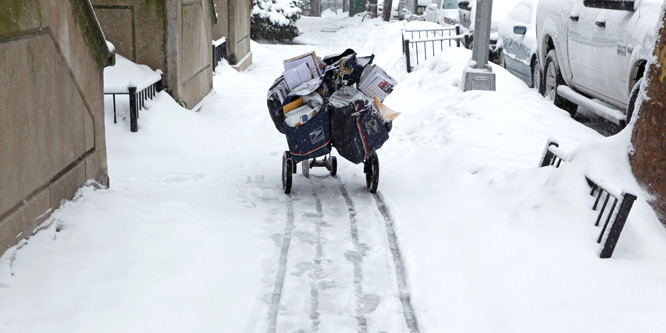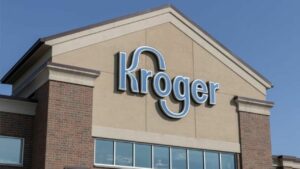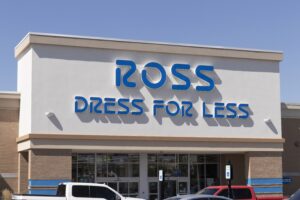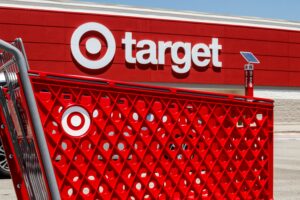
Photo: Getty Images/CribbVisuals
August 17, 2020
Can retailers mitigate holiday delivery fee spikes?
Retailers are expected to see blockbuster sales online this holiday with shoppers still nervous about in-store shopping, but a side effect is expected to be escalating delivery costs.
On Friday, the U.S. Postal Service (USPS) said that for the first time it planned to add surcharges to domestic commercial deliveries during the holiday season. The rates range from 24 cents to up to $1.50 per parcel.
USPS said in a statement, “This time-limited adjustment will increase prices for our commercial customers in line with competitive practices without impacting customers at the retail level.”
On August 7, UPS announced an increase in holiday peak surcharges that is expected to add $3- and $4-per-package for major retailers, significantly higher than expected. FedEx is also believed to be considering similar hikes.
In recent months, both UPS and FedEx have taken the unusual step adding peak surcharges to offset costs from the online surge during the pandemic. Residential deliveries, with lighter loads and more stops, are estimated to cost up to three times more than business deliveries.
Retailers are seen having little leverage. Hannah Testani, COO of Intelligent Audit, a freight audit and analytics company, told The Wall Street Journal. “With such few carriers that can truly move national shipments, the carriers have almost unlimited pricing power.”
To make up for the added costs, retailers can raise product prices or shipping fees. Other options may be incentivizing BOPIS or encouraging consumers to order items earlier in the season. Amazon.com shipped 66 percent of its own packages in July, according to ShipMatrix.
On UPS’s second-quarter conference call on July 30, CEO Carol Tomé said she learned in her past role as Home Depot’s CFO that large retailers have ways of minimizing the problem.
She said, “The customers don’t know. So while retailers may squawk at price increases that come their way, large retailers have a way to spread that across [SKUs] and nobody knows. So there’s an opportunity here on the pricing side to do what we need to do.”
- U.S. Postal Service Announces Temporary Price Increase – USPS
- UPS Peak Surcharges – August 7, 2020 Update – UPS
- U.S. Postal Service Plans ‘Peak’ Surcharges for Domestic Parcels – The Wall Street Journal
- UPS Plans Hefty Holiday Fees Amid Coronavirus-Related Shipment Surge – The Wall Street Journal
- Coronavirus Shifts Pricing Power to UPS and FedEx, and They Are Using It – The Wall Street Journal
- United Parcel Service (UPS) Q2 2020 Earnings Call Transcript – The Motley Fool
Discussion Questions
DISCUSSION QUESTIONS: Is raising prices or increasing shipping fees the better option for retailers to offset likely higher delivery costs this holiday season? What other options may be more feasible?
Poll
BrainTrust
Georganne Bender
Principal, KIZER & BENDER Speaking
Shep Hyken
Chief Amazement Officer, Shepard Presentations, LLC
Recent Discussions







Fortunately, these types of decisions no longer have to be made by actual humans. Enter the algorithms! Retailers have tools to determine which mitigating price strategies make sense by category, by item, and in relation to competitors. An across-the-board dictate isn’t realistic or required.
It’s disingenuous for the USPS to announce cost increases but to claim that they won’t “impact… customers at the retail level.” Does the Postal Service expect e-commerce shippers to absorb these price hikes without passing them along to consumers? It should be clear from rising grocery prices that the higher costs of maintaining a supply chain during a pandemic are indeed being charged to retail customers.
E-commerce retailers themselves will be torn between the usual market-share war surrounding “free shipping” and the real costs of doing business this fall. Amazon has the scale and infrastructure to absorb some of these costs, but very few others have the same capacity. Customers may need to shop around, and stick to e-commerce giants like Target and Walmart, to avoid paying significant surcharges on their holiday shopping.
This is where Amazon’s fleet of trucks is going to pay off compared to other retailers that are dependent on the whims of a third-party logistics provider. Amazon will be able to keep their prices lower than most because, as any supplier will tell you, logistics are one of the largest expenses now.
This will be a very digital holiday season and there is no doubt that shipping costs will increase to cope with the surge in capacity. If a higher proportion of sales are made online, which is almost a certainty, retailers will also suffer from margin compression. Both of those things point to the need for an injection of reality into what consumers are charged for shipping. However in a market where everyone is desperately battling for market share and where Amazon has locked in loyalty through its free Prime services, I have my doubts that we will see reality come into play.
Ultimately, I think most retailers will keep free or low-cost delivery. They will also be reluctant to put up prices on products. So mitigation will come from things like minimum order values for free shipping, pushing consumers to the less expensive collect-from-store option, driving volume deals, and trying to cut costs elsewhere. I also think retailers will try and spread out holiday sales as much as possible so that they can cope better with digital volumes.
As the economy tightens, this will become a price war issue. Where one side provides “free shipping,” and the other side charges for shipping and provides lower prices. Then there is Amazon Prime membership, which includes shipping for Prime members. Last holiday season there were “buy before” dates if you wanted your packages to be guaranteed to arrive on time. Maybe now it will be a “buy before” date if you don’t want a surcharge. Retailers must brainstorm about their options and then before they implement a strategy, survey customers to ensure their ideas are in alignment with customers’ expectations and needs.
While I appreciate UPS’s CEO’s comments about large retailers figuring it out without passing the cost on to the customer, the SMBs that have been struggling already due to the pandemic are the ones who are going to hurt. I have seen COVID-19 surcharges at restaurants in my area with little blowback, perhaps that is a way to mitigate the increases to help small businesses survive.
Spreading the cost through minor pricing actions across all items is the safest way to go unless the retailer already has some version of “shipping fees” in place. In earlier days I would have argued for making the affected customers bear the increased cost of the service. But “free shipping” has become a core plank of competitive omnichannel retailing for almost all areas but grocery. Unless/until enough retailers pass along the fees in some sort of “holiday surcharge” or other method that is shown as “shipping” on the customer’s checkout form, charging for shipping in a free shipping world will be deadly.
How much do we expect carrier costs to truly increase? Are they going to increase rates at the same time as lowering commitments re: delivery time frames?
Regardless, I think you spelled out the ways this can work. Spread the cost around on the product and do not show the costs as additional shipping. I like the idea of then turning and offering a product price discount, incentivizing BOPIS utilization.
There is no way around this. Consumers love free shipping and there is a perceived drop in value if free shipping is taken away. With shipping carriers in a near monopoly situation, they can pretty much price as they wish.
Retailers would be smart to weigh the alternatives – such as offering slower shipping in exchange for discounts or incentives. Experimenting with increased order thresholds is a must. Charging for returns where possible is another option. The key is to understand all available options.
Comparing prices for the same item or similar items online is very easy. Depending on the retailer, the basket size needed to avoid paying shipping varies and to a lesser degree so does the time it takes to receive a delivery. My expectation is that retailers will use a mix of cost increases and delivery fees based on their customer mix and the item being purchased. One of the outcomes may be that more people will join Amazon Prime to avoid delivery fees.
If everyone raises prices then consumers don’t have an option but to pay for it. Brands that find creative ways to offset this increase in delivery cost will have a competitive advantage. One way probably is for brands to strike a deal with the postal services to reduce the cost a bit.
I ordered a table from Pottery Barn this past weekend and the shipping charge was okay, a little high, but it’s a heavy piece. What was weird is that there was also a shipping charge to have it shipped to the store. And it was higher than shipping it to my home. What’s up with that? Most retailers eschew the shipping charge when the product is sent directly to the store.
Personally, I would much rather have part of the shipping charge rolled into the retail price. Consumers aren’t stupid. We know that Amazon and Wayfair aren’t shipping for free because they love us, and we understand we are paying for shipping charges somewhere. Retailers need to keep shipping charges under control to avoid customers clicking over to a competitor’s site.
I see at least one problem with this approach and that is that to roll the cost of “free shipping” into the sale price is unfair to those who buy or pick up in the stores. Dual pricing looks hokey too. The most transparent form of recovering the cost of shipping is to charge for it separately, fairly and make a big deal about it. That is my opinion.
That makes sense, Bob. When I order online and the shipping fee is almost as much as the item, you can bet I will abandon my cart.
Retailers won’t have much choice but to raise product prices or shipping costs for the consumer. Even Amazon relies in part on the USPS, and any thoughts that consumers won’t be affected is malarkey. Whether it’s done transparently or covertly, customers will feel the effects of increased costs across delivery purchases. We will see a push towards omnichannel, BOPIS and curbside pickup that may reduce the burden on consumers and retailers alike. Some retailers will be forced down this path as the only option, with a drive to bring customers to their stores. After all, the retailers have invested in store safety, training and preparation, despite the digital shift, retailers will seek to maintain margins and encourage engagement at the store. Larger chains will have an easier time and companies with strong logistics and omnichannel capabilities in place will come out as winners.
How about offering the organized shopper, who can cluster their deliveries to a single day (Amazon has this) an incentive to do so? It’s cheaper to arrive once at a household with five packages than to make five trips. With the exception of those last-minute gifts (which for delivery still have to be last week, not last minute) it’s possible to lower costs for all with a bit of planning and organization. On the current model it won’t work all the time if the logistics companies raise the charge per package and there is no way to combine items into a single package — but the reality is it is cheaper all around, and less wasteful for all.
The increase in shipping costs will ultimately be passed on to the consumer no matter how the shippers market it. These increases could possibly ripple through to many other aspects of the retailers’ merchandising allocation and planning process. If retailers decide to be transparent with the proposed peak time fees that could move the purchase time lines out further with “buy by XX date to avoid shipper-imposed service fees.” Additionally, advanced retailers may combine this change with the opportunity to reduce fraud costs by reducing consumer fees on items shipped to lockers or other secure delivery locations. The challenge for retailers is going to be around remaining competitive, in-stock, and meeting commitments while simplifying what is going to become a more complex delivery world.
I do like the choice of language here. For smaller merchants/manufacturers like us with no volume negotiating leverage, frank honesty is a good policy (residential surcharges and fuel surcharges play here as well).
Every retailer has the option of becoming a merchant, and merchants rarely take their standard markup based solely on cost. Every real merchant will determine what an item should sell for rather than relying on keystone markups. That could truly offset the increased impact on shipping costs. It is going to be competitive this year, and customers will be quick to complain if delivery costs are perceived as too much.
When shipping fees increase, a good mitigation strategy I advise my clients is to offer bundles (i.e. a combination of several existing products). This increases the average order value without always increasing the shipping cost. Especially during the holiday season bundles can be very effective: customers spend more money when they can pick bundles than if they have to browse for all the individual products themselves.
Perception is everything to consumers, so showing an increase in shipping costs on a purchase looks like an invitation to shop a competitor to most consumers. Retailers will need to spread these surcharges across their SKUs to avoid the margin squeeze. Expect more incentives from retailers to shop early this holiday season so they can spread the costs over time as well. We will also see more incentives to use BOPIS and curbside pickup options to reduce those shipping costs. The bottom line is this cat is out of the bag and it’s not going back in as far as consumers are concerned!
Collusion, collusion, collusion. This is classic broadcasting of price increases which have been historically projected for any industry with just a few players and no limitations on their pricing. By allowing the USPS to start pricing themselves like UPS and FedEx, we are opening the door for open market collusion and anti-competitive practices. We need to fix this in the USPS and control the collusionary tactics that both UPS and FedEx enjoy as a result of this.
Consumers despise fees for service, shipping, and delivery, and that is why one-time fees, as with Amazon Prime, are so popular. Retailers are better advised to implement one and done coverall fees, averaging in the extra demand for holidays, or else build the costs of delivery into prices.
Absolutely right. As I was thinking about answering this, I saw your comment. Yes, don’t make me think, don’t make me calculate, don’t make me look for the “best shipping” cost” and then compare the “best price.” Net/net, please. I will make my buy or no-buy decision and move on.
I think most seem to agree to just charge me a higher price (so they can promote “free” shipping) and don’t nickel and dime me with shipping charges.
It is not surprising that delivery costs will have to go up this season for peak trading and delivery times. The operators are having to scale up to potentially unprecedented volumes and that means huge additional resources for a short period. It is an opportunity for the omnichannel retailers to fight back at the pure play online retailers by promoting click and collect/BOPIS and curbside collection at their retail outlets but they too will have increased costs for home delivery.
Will retailers take a hit on margins? Unlikely as they have the ability to spread costs and review pricing to ensure that they do not lose out. Will it be painful for those offering free delivery? It will take the edge off it and some may react by increasing minimum spend for very short delivery times.
What cannot be mitigated is the impact on the environment. With so many more vans making not only uneconomic but harmful deliveries, the environment will suffer measurably more than usual. Should governments be looking at this? Absolutely because if they do not then this will continue with really serious consequences for the people who live in urban areas and especially children and those with breathing difficulties.
What may be an irritation to retailers could be serious for the environment.
Agree… we cringe at some of our Amazon deliveries of a small envelope with a $10 item in it, dropped of by a van that made a special trip. Taken in its entirety, in a given week we will have:
We certainly could have lived with a coordinated delivery every other day. I suppose the trucks making the deliveries are in the area anyways, but still….
I was half joking the first time I said that Black Friday creep would mean the holiday shopping would start in mid October with Prime Day. The rolling effects of the pandemic, and the need to manage foot traffic/density and shipping traffic, now means that mid October is indeed the right time for customers and retailers alike to kick it all off.
The inherent costs of dealing with the pandemic are not discretionary, so everything is now more expensive. Higher shipping fees make absolute sense. The retailer just has to be as fair and transparent as possible. Seems like Target may have an edge here. The way they managed to shift to store fulfillment has given them a pretty good model, whether it’s shipping, BOPIS or curbside.
I think free delivery is table stakes so moving this to pricing seems to make the most sense, but another potential alternative is BOPIS or BOPAC. Getting people to pick up at their nearest store could increase sales by generating traffic. Another idea may be to charge a USPS surcharge to help fund the United States Postal Service which is struggling in the current climate. Ship early and support the USPS with a surcharge.
With increased shipping fees passed on to consumers–whether in the retail price or the shipping cost–will come a dampening effect on holiday sales. By fourth quarter of 2020, consumers will be deep in the uncertainty of our times. Retailers who maintain the perception of low-cost or free shipping/delivery will win. Consumers will see this not so much as providing convenience, but that retailer keeping our best interests at heart. My advice is to do the math, take a hit, keep and win customers’ loyalty.
This move puts every retailer at the whim of logistics, removing the customer entirely. Since the retailer and brand will care more about the consumer, they will be the ones to create the work around. For example, Holiday Seasons could start earlier to avoid surge pricing, retailers could create bundles to increase cart size qualifiers for free shipping. Coming into the holiday season during economic crisis will force brands to recognize consumers’ need for value.